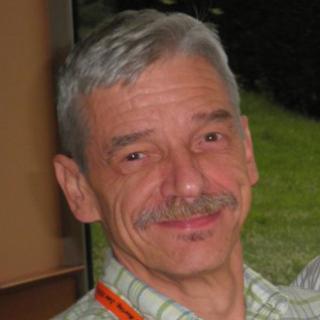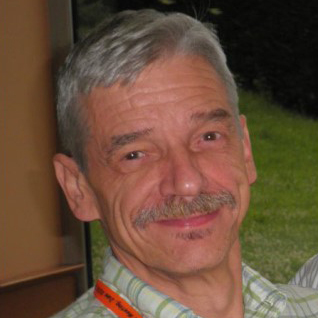
Zbigniew Dauter, Ph.D.
- Center for Cancer Research
- National Cancer Institute
- Building 446, Room A110
- Lemont, IL 60439
- 630-252-3960
- zdauter@anl.gov
RESEARCH SUMMARY
Dr. Dauter headed the Synchrotron Radiation Research Section, which was located at the Argonne National Laboratory, the site of the largest U.S. synchrotron facility. He used X-ray diffraction techniques to solve crystal structures of various proteins and nucleic acids of biological and medical relevance. Dr. Dauter specialized in analyzing crystal structures at extremely high resolution and accuracy, in developing methods of effective diffraction data collection and in using weak anomalous dispersion effects to solve structures of macromolecules.
Areas of Expertise

Zbigniew Dauter, Ph.D.
Research
The Synchrotron Radiation Research Section was located at the Argonne National Laboratory near Chicago, Illinois. The aim of the research within this Section was to utilize the unique properties of the X-ray radiation generated at synchrotron storage rings--in particular, at the Southeast Regional Collaborative Access Team (SER-CAT) beamlines of the Advanced Photon Source (APS).
The two most important characteristics of synchrotron radiation are the high intensity of the X-ray beam and the tunability of the wavelength; both of these properties were used in the research investigations within the Section. The SERCAT beamlines (based on the undulator and the bending magnet) are easily tunable within the wavelength range from beyond the bromine absorption edge to long wavelengths, and successful MAD experiments were performed on such anomalous scatterers as bromine, selenium, mercury, platinum, zinc, holmium, and iron. On the other hand, long wavelengths permitted the group to utilize the very weak anomalous signal of lighter elements, such as sulfur and phosphorus, naturally existing in proteins and nucleic acids. Several atomic-resolution diffraction data sets extending to ultra-high resolution (beyond 0.8 angstrom) were collected and used for precise model refinements.
In addition to conducting research investigations, the Section personnel provided technological and scientific support for NIH researchers collecting diffraction data at APS. The NIH Intramural Synchrotron Consortium of macromolecular crystallographers was a part of SERCAT and used about 20% of the total available time at SERCAT beamlines. Collecting diffraction data at the synchrotron beamline involved a high level of technology--but it was a scientific process, not a technicality. Therefore, a proper selection of all the necessary parameters was done only if based on scientific considerations.
Publications
- Bibliography Link
- View Dr. Dauter's Complete Bibliography at NCBI.
Molecular basis of agonism and antagonism in the oestrogen receptor
Triclinic lysozyme at 0.65 Å resolution
Human Suv3 protein reveals unique features among SF2 helicases
High regularity of Z-DNA revealed by ultra high-resolution crystal structure at 0.55 Å
Data collection for crystallographic structure determination
Biography

Zbigniew Dauter, Ph.D.
Dr. Dauter earned his Ph.D. in Crystallography from the Technical University of Gdansk in 1975 under the direction of Professor Z. Kosturkiewicz. From 1975 to 1997, he conducted research in structural crystallography at the University of York, the European Molecular Biology Laboratory in Hamburg, and the Technical University of Gdansk. He established the Synchrotron Radiation Research Section at Brookhaven National Laboratory (BNL) in late 1997, and joined the Macromolecular Crystallography Laboratory, NCI, as a Section Chief in 2000. His laboratory was relocated from BNL to Argonne National Laboratory at the end of 2004.
Dr. Dauter retired as a Senior Investigator in 2020 and is now an NCI Scientist Emeritus.